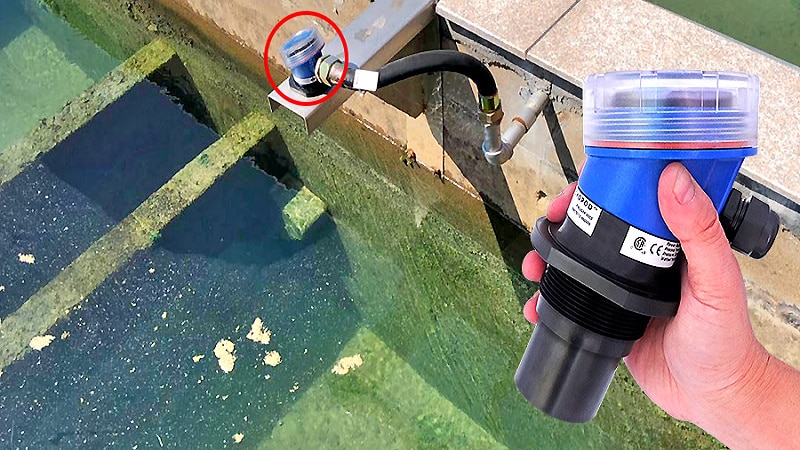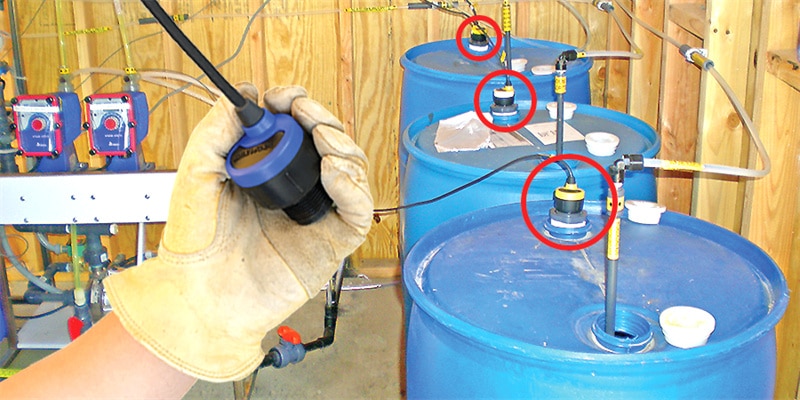
Ultrasonic tank-level sensors, an integral part of modern industrial operations, are revolutionising how you measure and manage fluid levels. These sensors employ ultrasonic waves to accurately gauge the level of liquid in various tanks. Their non-invasive and highly precise nature makes them essential for diverse applications, ranging from agriculture to manufacturing.
Understanding Ultrasonic Technology
An ultrasonic tank level sensor utilises ultrasonic waves beyond the range of human hearing, generally above 20,000 Hz. The basic principle involves emitting ultrasonic pulses from a transducer towards the liquid surface in the tank. These pulses then reflect off the surface and return to the sensor. The sensor calculates the time it takes for the waves to bounce back, allowing for an accurate measurement of the fluid level.
The speed of sound in the fluid is critical in this measurement. It is influenced by the type of liquid and its temperature, which the sensor considers for precise calculations. By employing this fundamental principle, ultrasonic tank-level sensors provide highly accurate readings, even for challenging liquids with varying properties.
How Ultrasonic Tank Level Sensors Work

- Ultrasonic Pulse Emission: The ultrasonic sensor emits a short ultrasonic pulse towards the liquid's surface in the tank.
- Wave Reflection: The pulse hits the surface of the liquid and reflects towards the sensor due to the change in medium (from air to liquid).
- Return Time Calculation: The sensor calculates the time it takes for the pulse to return, using the speed of sound in the liquid to determine the distance from the sensor to the liquid's surface.
- Fluid Level Determination: By knowing the distance from the sensor to the liquid's surface and the tank's geometry, the sensor accurately calculates the fluid level in the tank.
Precision Measurement for Fluid Management
The precision of ultrasonic tank-level sensors is unparalleled, making them invaluable for fluid management in various industries. These sensors can accurately measure fluid levels in large tanks, drums, or even small containers. Such precise measurements are crucial for maintaining optimal levels for industrial processes and ensuring the availability of resources in agricultural settings.
Accurate fluid level measurement in industrial setups is vital for efficient production and resource management. Whether monitoring the fuel level in a refinery's storage tank or managing chemicals in a processing plant, ultrasonic tank level sensors play a pivotal role. They enable timely replenishment, preventing disruptions in operations and minimising downtime.
Advantages of Ultrasonic Tank Level Sensors
- Non-Invasiveness: Ultrasonic sensors do not need direct contact with the liquid, ensuring a non-intrusive and contamination-free measurement process.
- High Accuracy: These sensors provide precise readings, making them suitable for applications where accuracy is paramount.
- Versatility: Ultrasonic tank-level sensors can be used with various liquids, regardless of their composition or properties.
- Easy Installation: Installation is straightforward and does not require extensive modifications to existing tank systems.
Applications Across Industries
The applications of ultrasonic tank-level sensors are diverse and widespread. In the agricultural sector, these sensors aid in monitoring and managing water levels in irrigation tanks. By ensuring a steady water supply to crops, farmers can optimise their irrigation processes, leading to healthier yields and efficient water usage.
In the oil and gas industry, ultrasonic tank level sensors measure liquid levels in storage tanks. This allows for precise management of oil reserves and facilitates timely reordering to ensure uninterrupted operations.
Moreover, in the pharmaceutical and food industries, where accurate liquid measurements are crucial for production, these sensors play a critical role. They aid in managing ingredients, ensuring product quality, and minimising waste.
Innovations and the Path Ahead

The field of ultrasonic tank-level sensors is ripe for innovation. One exciting avenue is the integration of ultrasonic technology with other sensor types. Combining ultrasonics with pressure or capacitance sensors could offer more accurate and versatile fluid level measurements, especially in challenging environments.
Another area of innovation is miniaturisation. These sensors can become smaller as technology advances while maintaining or enhancing their precision. Miniaturisation opens doors for applications in smaller tanks or IoT (Internet of Things) devices for residential uses, allowing homeowners to efficiently monitor fuel levels or water tanks.
Furthermore, incorporating wireless communication capabilities will enhance the usability of ultrasonic tank-level sensors. Real-time data access through mobile applications or web interfaces will empower users to make timely decisions and promptly respond to changing levels or conditions.
Overcoming Challenges
While ultrasonic tank-level sensors offer numerous advantages, they are not without challenges. Environmental factors such as temperature, humidity, and turbulence can affect the accuracy of ultrasonic measurements. Innovations in sensor design and signal processing are needed to mitigate these challenges effectively.
Additionally, the cost of ultrasonic tank-level sensors can be a barrier to widespread adoption, especially for small-scale applications. Continuous research and development efforts should focus on cost reduction without compromising on the quality and accuracy of these sensors.
Future Prospects and Conclusion
As technology continues to advance, ultrasonic tank-level sensors will evolve further. Future sensors may incorporate enhanced data analytics and connectivity features, enabling remote monitoring and real-time data access. Artificial intelligence and machine learning may also be integrated to predict fluid consumption patterns and optimise resource allocation.
In conclusion, an ultrasonic tank level sensor is pivotal in today's industrial landscape, providing precise fluid level measurements for efficient operations. Their non-invasive nature and high accuracy make them indispensable across various sectors. As you move forward, these sensors will continue to drive efficiency and sustainability in fluid management, shaping a more informed and resource-conscious industrial world.










